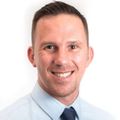Cog Néuro GO: Capturing and Enhancing Episodic Memories Made in the Wild
The ultimate goal of neuroscience is to understand and explain real-world behavior in terms of brain activity, and to use these insights to develop therapeutic approaches for neural disorders. By using mobile recording devices synchronized with intracranial EEG recordings in epilepsy patients with an implanted deep brain recording system, we can study the neural basis of human activities such as navigation and real-world memory encoding in a way that captures the complexity, scale, and functional characteristics of real-world experiences. In this talk, I’ll describe an experiment in which we asked five participants to learn a 0.75-mile route around campus while hippocampal electrophysiology was recorded. In order to gain measurement control over this rich, real-world, and complex experiment, we synchronized a variety of wearable sensors (eye-tracking, GPS, accelerometry, psychophysiology, etc.) with the participant’s hippocampal recordings and 1st person experience with millisecond precision. Using this synchronized system, subjects walked the route 7-8 times across two days, with the 1st walk guided (encoding) and 6-7 of the walks navigated by the participants themselves (navigation retrieval; 28.5 total miles). Findings across all participants suggest that theta band power significantly increases when participants are navigating outdoors relative to indoor navigation. We also find evidence that temporal lobe theta band power changes immediately around spatial event boundaries. Taken together, these initial neural findings support our hypothesis that medial and lateral temporal lobe activity changes around real-world event boundaries. Future studies will investigate the potential of direct brain recordings to capture the processes of autobiographical memory formation and direct brain stimulation to enhance episodic memory for real-world experiences.
Learning Objectives:
1. Describe the importance of understanding cognitive neuroscience in the wild, complex, real-world.
2. Review the new opportunities for doing cognitive neuroscience using naturalistic paradigms.
3. Demonstrate the insights that can be gained by recording neural data during real-world behaviors.






